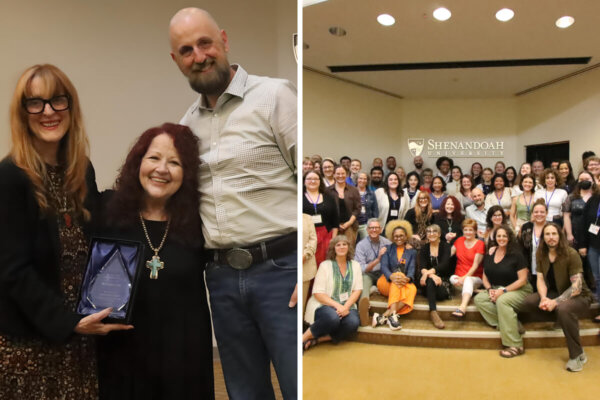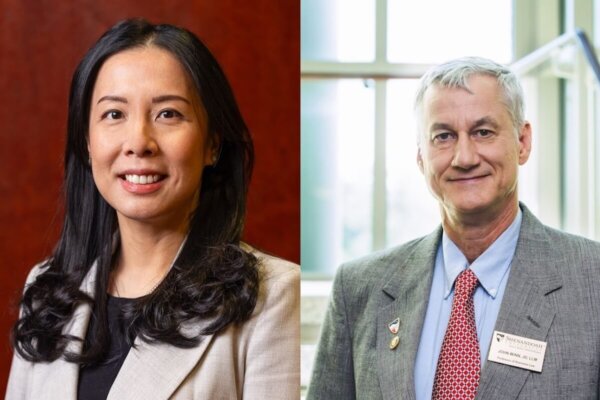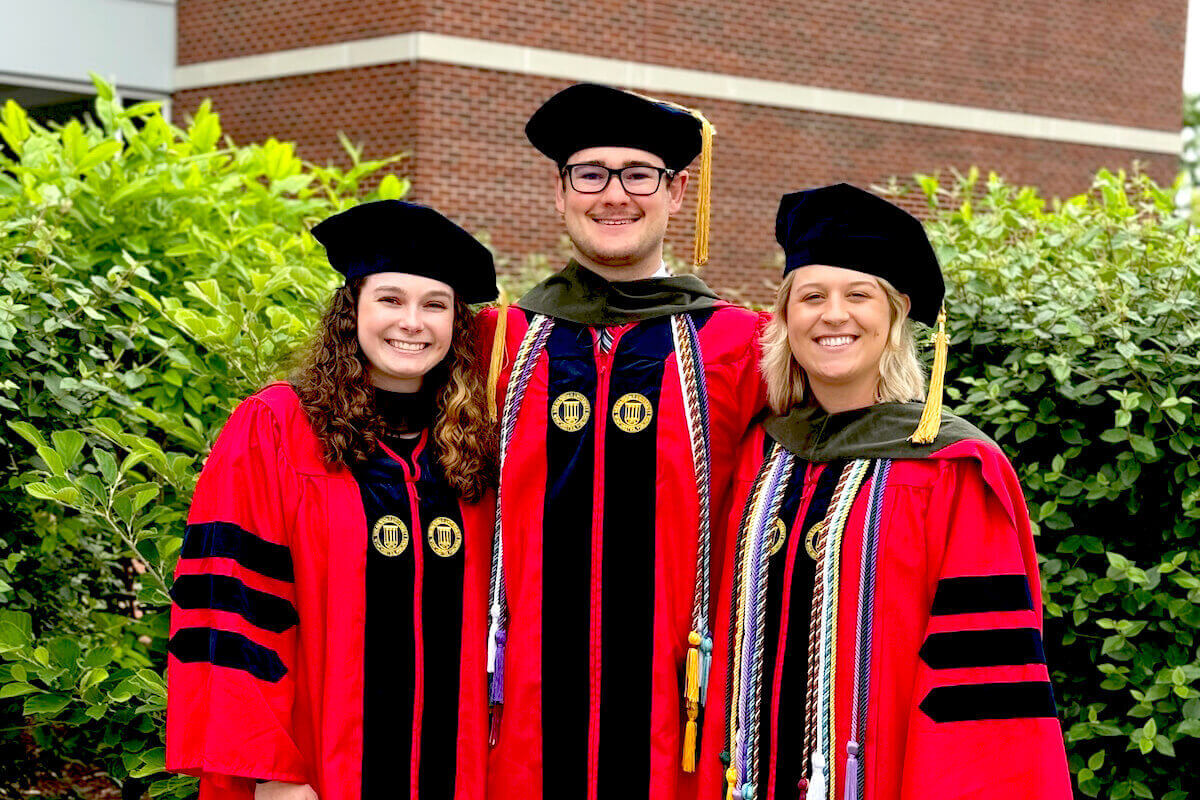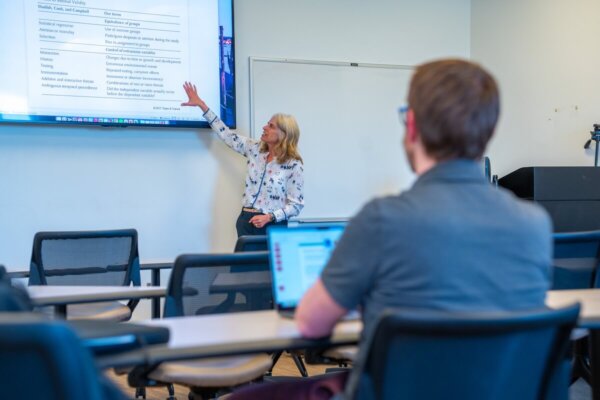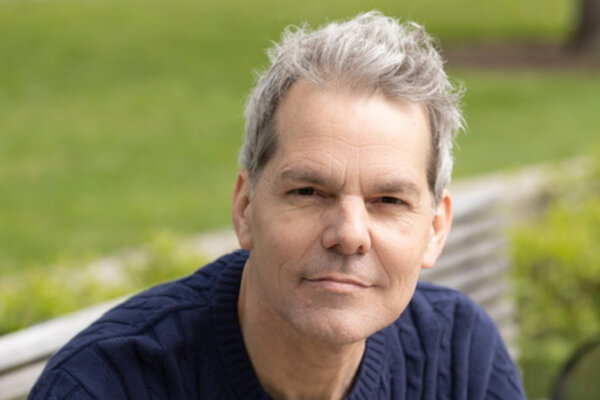Opera Production Showcased The Power Of Collaboration At Shenandoah
‘Caged Birds’ featured opera, dance, an instrumental ensemble and augmented reality
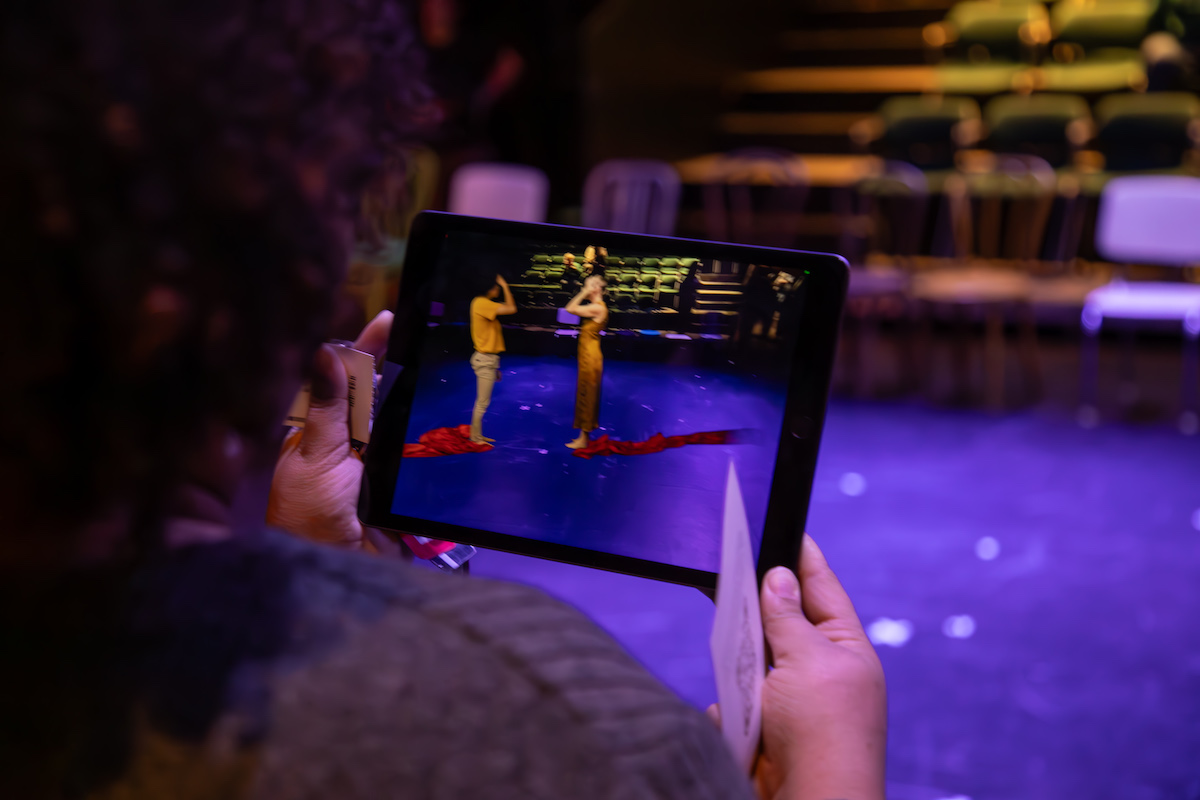
Shenandoah Conservatory’s recent production of “Caged Birds” treated audience members to a multi-disciplinary collaboration of dance, opera and live music by the EDGE Ensemble, and encouraged audience participation via a live vote at each performance’s conclusion. It also showcased how SU’s expertise in augmented reality can further immerse theatergoers in a conservatory production.
The Shenandoah Center for Immersive Learning (SCiL), led by SCiL Co-Director Nathan Prestopnik, Ph.D., lent its expertise to “Caged Birds,” creating a pre-show augmented reality application that helped set the stage for the performance as audience members found their seats. Using an iPad as a “window” to view a piece of what was to come, guests could watch spirit-like dancers perform on the stage of Glaize Studio Theatre – dancers who would appear in-person later in the performance but existed only in the virtual space in the moments leading up to the start of the production.
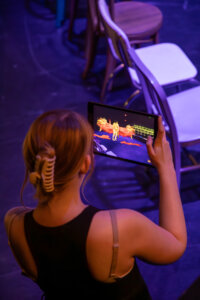 Conceived and directed by Director of Opera Ella Marchment, “Caged Birds” imagines a gathering of women trapped by – or in – their own bodies and features characters inspired by historical figures. The work explores the lives of these iconic figures and immerses the audience in their struggles to be accepted for who they were in a male-dominated society.
Conceived and directed by Director of Opera Ella Marchment, “Caged Birds” imagines a gathering of women trapped by – or in – their own bodies and features characters inspired by historical figures. The work explores the lives of these iconic figures and immerses the audience in their struggles to be accepted for who they were in a male-dominated society.
These historical figures meet in a fictional courtroom in the void between life and death, and the audience watches as they come to terms with some of the baggage and regrets that each individual has accumulated throughout their life. Each performance concluded with a live vote from audience members, who served as the “jury” that ultimately decided where the characters on stage went after court concluded.
The dancing figures that audience members could watch virtually prior to the show reappeared live on stage only when the characters were prepared to accept emotional growth and change.
The AR prelude that Nate and his team created was really integral to the audience comprehending the throughflow of an abstract-devised piece. In our world, the dancers represented agents of liberation and were nonhuman figures that released the human ones from the shackles of the connections they had established during human life. By introducing the dancers from the get-go via AR as supernatural beings, this helped us deliver in a more immediate way a key narrative thread of the work and enhance the audience experience of the work. It was truly a joy to play, create and invent with the team at SCiL.”
Ella Marchment, director of opera
To create the AR program, the team from SCiL worked with a group of Shenandoah Conservatory dance students who were led by Adjunct Instructor of Dance Lindsay Browning. The students – Ella Gibson ’27, Pamela Ringer ’27, Malia Bercaw ’27, Philly Kang ’27 – were recorded in front of a green screen, allowing the SCiL team to create the transparent background that made the virtual dancers appear as if they were dancing on the Glaize Studio Theatre stage.
Dr. Prestopnik served as the AR project’s director, while Immersive Technology Specialist Wes Brown designed the app and Immersive Media Specialist Lee Graff, M.Ed., captured the green-screen recordings.
Virtual reality design student Ann Fink ’25 played a key role throughout the process, working on various parts of the AR application design and testing, assisting with the green screen production and helping out on the night of the performances. Collaborative audio arts student John Bernard ’23, who graduates in December, assisted with the AR application design testing, while VR design students Tyler Dossat ’25 and Ethan Swope ’25 had a hand in the green screen testing and production.
Swope, Jacob Eisenhart ’25 (Bachelor of Arts in VR Design) and Gabby Pieklo ’26 (Bachelor of Arts in Media and Communication/Bachelor of Business Administration) joined Fink in engaging with audience members on show night, helping to make the blend of live and virtual performance a success.
Prestopnik, who noted that he and Marchment had discussed for months the different ways they could incorporate augmented reality in a conservatory performance, said that SCiL’s work on “Caged Birds” was a good way to explore the technology in a way that was still meaningful to the overall production, and the cross-disciplinary collaboration supported his belief that augmented, virtual and extended reality is useful in any context.
“Obviously, a lot of the work we’ve done in SCiL has been in the sciences, and we’ve done a ton of history work. It was really interesting to do something in the performing arts. It’s a very different context, a very performative mentality,” Prestopnik said. “It actually kind of connects back to the roots of SCiL because SCiL originally had really strong connections to the conservatory and to performance – immersive performances, virtual performances. It’s kind of cool to be able to do another project that’s in that space.”
